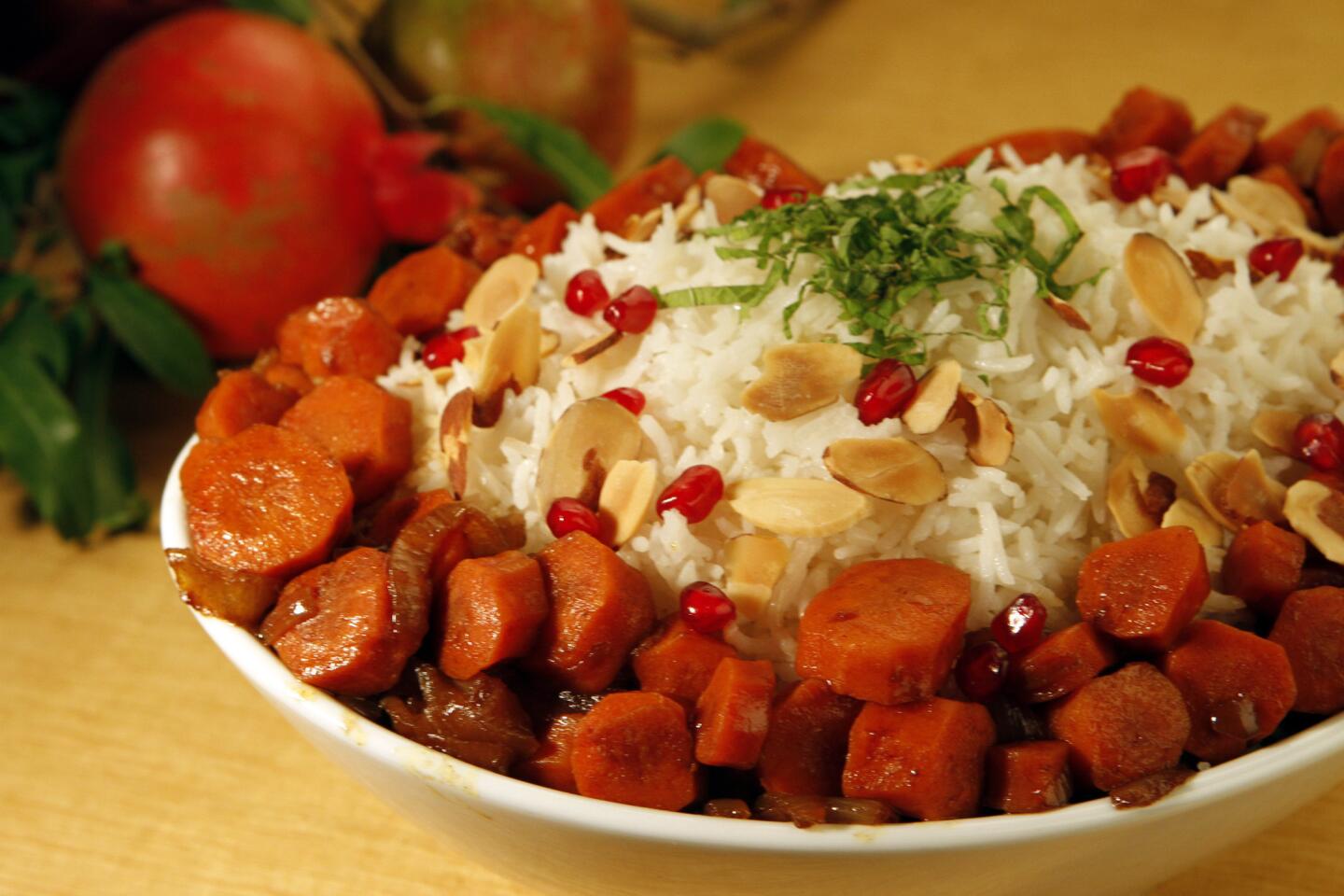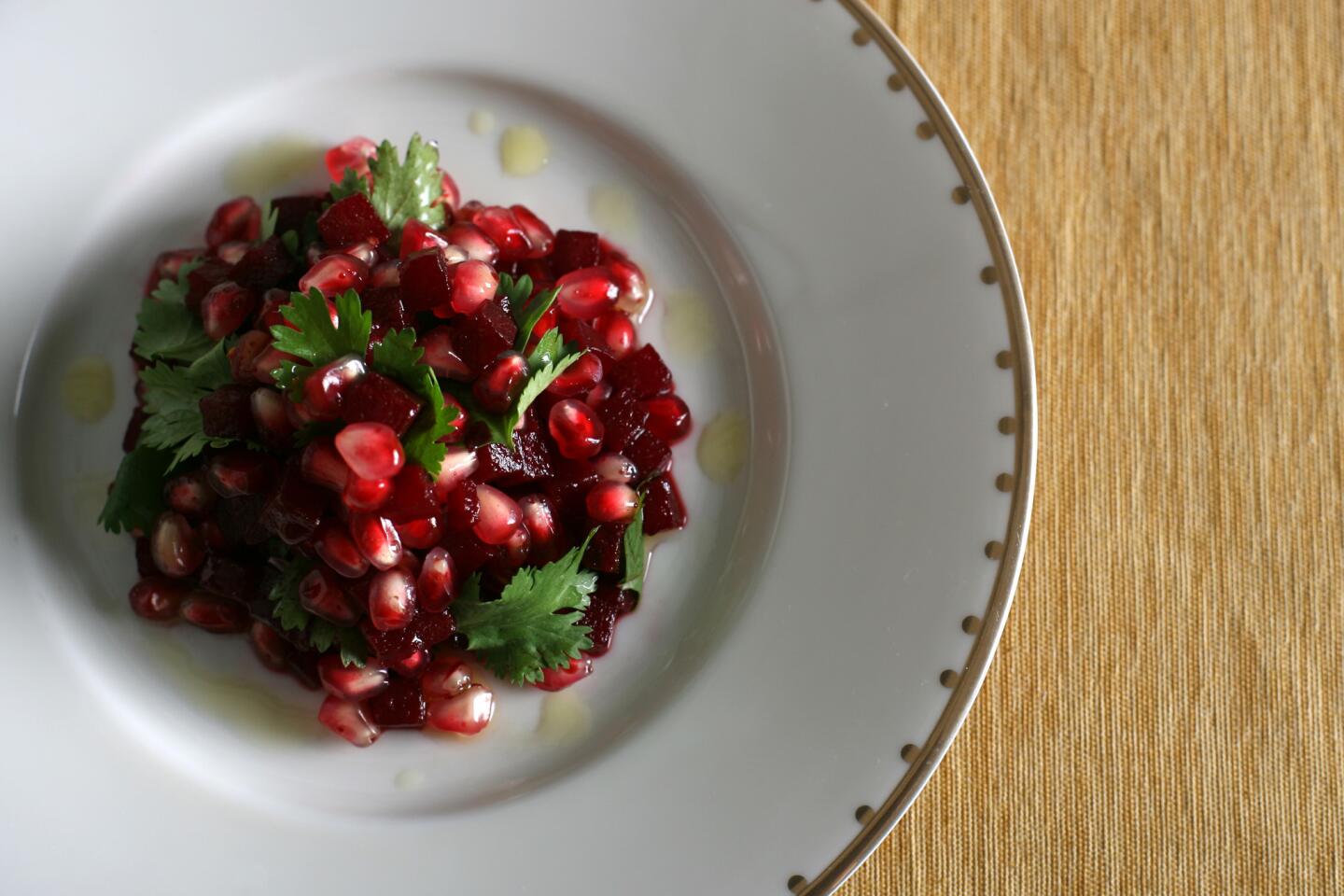Pomegranates, the ultimate in inconvenience, until you learn the trick
- Share via
Sweet and tangy as they are, pomegranates are undoubtedly the “un-convenience” fruit. Few other foods demand as much of the eater. Not only do you have to break through that tough, leathery outer shell, but then you have to pry apart the pith to get to the delicious, though admittedly seedy, edible parts. Even after all that, you may well wind up with all of your clothes stained bright red. That’s probably why you rarely see anyone walking down the street snacking on a pomegranate.
There’s an easy way to clean a pomegranate, though. Score the skin in quarters and open it up. Then put each quarter underwater and use your fingers to ream the seeds from the inside. The pith is light and will float to the top; the heavier seedy fruit will sink. Here’s a video to show you how.
Pomegranate fruit is usually used as a garnish -- ruby gems on a fall or winter plate. For a more usable form of pomegranate flavor, look for juice (now widely available) or molasses, which can be found in Middle Eastern stores.
How to choose: Select pomegranates that are heavy for their size; they’ll be the juiciest. Don’t worry too much about the color of the rind: It can vary from completely red to reddish-brown without affecting the quality of the edible fruit. Do look for deep color though.
How to store: Pomegranates should be refrigerated; they’ll last at least three to four weeks. Once they’ve been seeded, the seeds also can be frozen in a tightly sealed bag.
How to prepare: Slice Fuyu persimmons and dress them with a little sugar and a dash of orange liqueur, then scatter pomegranate seeds over the top.
ALSO:
VIDEO: The easy way to peel hazelnuts
RECIPES: Welcome the weekend with cupcakes
More to Read
Eat your way across L.A.
Get our weekly Tasting Notes newsletter for reviews, news and more.
You may occasionally receive promotional content from the Los Angeles Times.

















